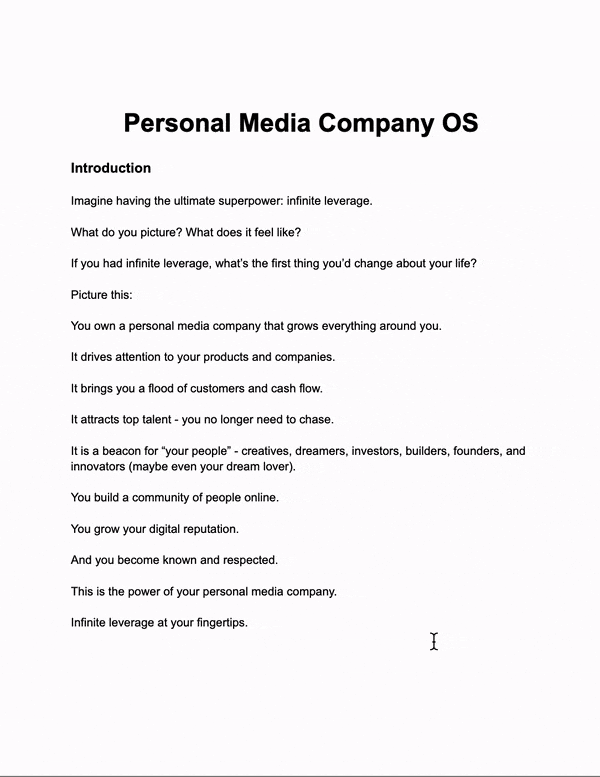1) Assets
You only need 2 assets to build a personal brand.
1. Your ideas (intellectual property)
2. Hiring weapons (human capital)
Asset #1: Your ideas (intellectual property)
I started paying more attention to my ideas when I heard MrBeast say:
"The idea makes up 90% of a video's success," (paraphrasing).
In the long run, a good idea beats anything:
- Hook
- Formatting
- Persuasive tactics
The best idea with the worst format still gets shared.
Marcus Aurelius wrote Meditations as personal notes to himself - no hook, no structure, just raw thoughts.
Plato's Republic & Aristotle's works are just lecture notes and dialogues. And it's not because they optimized their delivery. It's just that they (and other ancient philosophies) contain ideas that have stood the test of 2000+ years.
Create timeless art, not content.
Asset #2: Human capital (hiring the right people)
Writers, designers, and video scripters are megaphones.
They can amplify your message. But they can’t change you.
That's why I stay involved in the ideation of almost all content to this day.
How I do it:
1) Once every 6 months, I rant down 100+ content ideas for newsletters, threads, etc. into a spreadsheet

2) I send the spreadsheet to my writers
3) My writers pick the best ideas and execute them
Put a great idea in front of a great writer, then get out of their way.
Now, a mistake I see many founders make is hiring generalists.
The world is becoming more and more niched. I started out with 1 writer, but as soon as I had the money, I hired specialist writers. Today, my team spans 5+ writers, each with their own specialty.
If you want to get attention on LinkedIn, find a writer who knows how to get attention on LinkedIn.










.webp)


